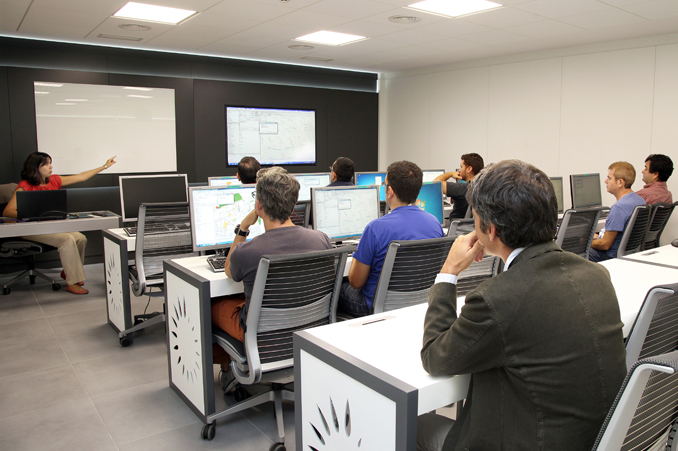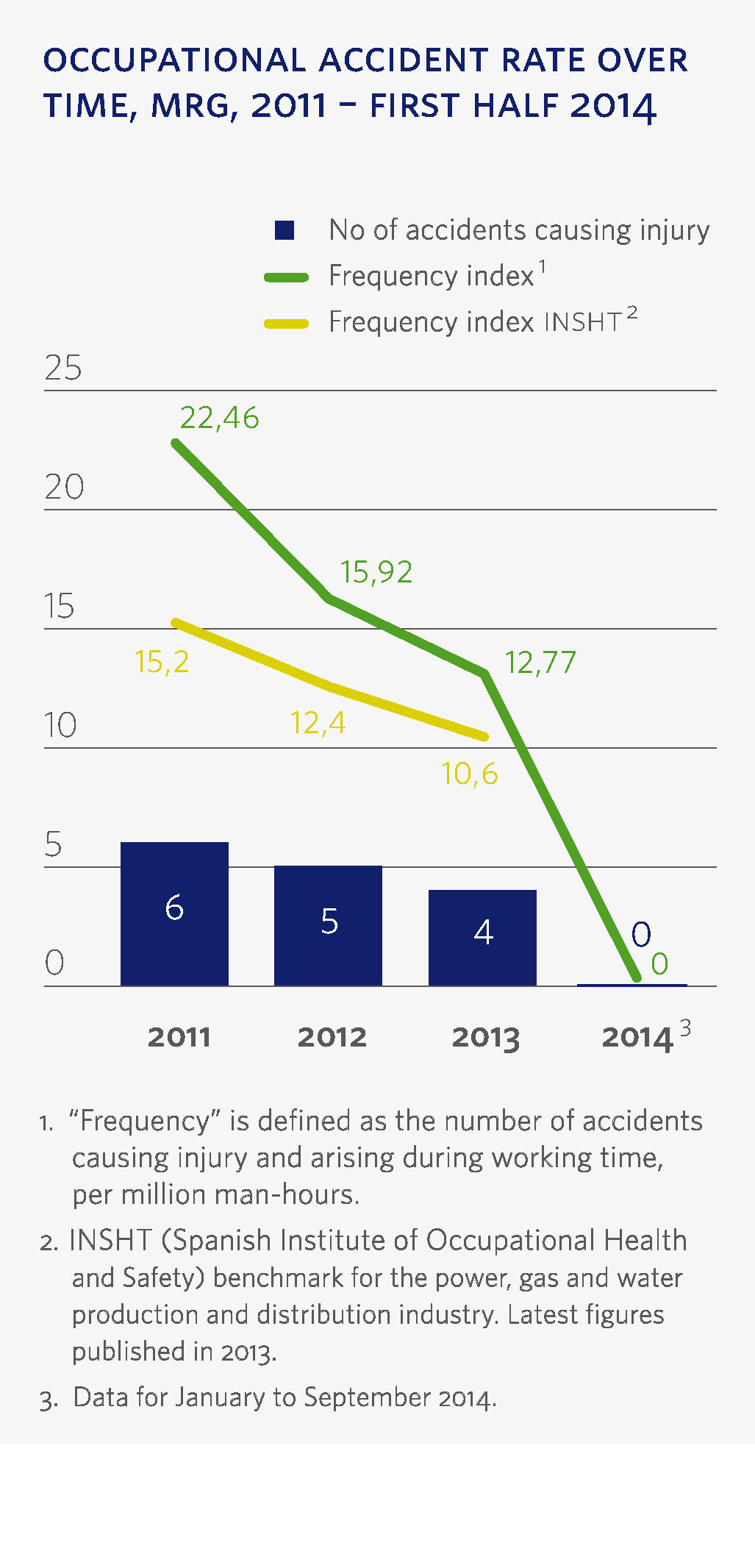
Training
Madrileña Red de Gas is committed to ongoing improvement of our people’s skills and professional development. We believe training initiatives are crucial to the growth of the company. Every year, we plan a range of training courses that effectively cater to Madrileña’s real needs. Our training programs are tailored to the emerging needs that arise in MRG’s employees’ jobs and commitments so as to support the professional growth of our people on an individualized basis. Training goals are aligned with the organization’s strategy so as to create real value within the business.
The benefits of our training drives include enhanced productivity and competitiveness through acquiring and improving our employees’ skills, heightened awareness of our policies, and adaptation to technological and organizational change.
The key factor guiding our training plans is customer orientation and satisfaction, which is the sustaining force of the company. Our commitment to users is the mainstay of the planning and implementation of the courses we offer to our employees, in a bid to provide them with the best training within our reach.
This year, 70% of our employees undertook at least one training action, rigorously developed and implemented by MRG’s training unit. 2,700 hours of training were provided across 25 different courses. Over 1,700 hours of training revolves around direct business concerns: cathodic protection, gas-driven climate control projects, energy efficiency, regulatory matters, etc.
500 hours of training were devoted to skills upgrading (leadership and communication skills), and a further 500 hours to office IT skills (Access, Excel, GiS-GDO, Microstation, etc).
Creating jobs
Madrileña Red de Gas employs 166 people in-company and outsources auxiliary activities to over 300 contractors. Requirements as to training, qualifications, and occupational health and safety are standard for both in-house employees and for contractors.
In addition, our business indirectly supports a further 600 jobs at other companies: installers, boiler manufacturers, distributors, retail suppliers, etc.
Maximum safety
In partnership with Gas Natural Distribución, MRG developed an Emergency Protocol, which sets out a procedure for mutual support in serious emergencies that might compromise gas supply continuity or safety. We undertake ongoing occupational risk prevention efforts, including an exhaustive training plan for all staff involved in maintenance and emergency response work. We also equip our people with the gear needed to do their jobs to the highest standards of safety.
We have the necessary resources to monitor and follow up our contractors’ compliance with safety requirements via firms specializing in risk prevention.
The fact that Madrileña has not experienced any serious incident this year bears out the effectiveness of the measures taken.
Lower occupational accident rate
One of the key goals Madrileña Red de Gas has achieved over its four-year lifetime is a significant decrease in the number of occupational accidents.
This achievement was based on:
- A robust and consistent drive to raise employee awareness of occupational risk and train our staff in prevention activities.
- Comprehensive investigation of occupational accidents and adoption of preventive measures.

Risk management
With a view to achieving our business objectives Madrileña Red de Gas has laid down an end to end business risk management policy. The underlying principles and commitments of the policy address the concerns of a wide range of stakeholders, support strategic flexibility and optimization, and bolster efficiency and minimizing costs.
Business risk is monitored by systematically documenting all our actions so as to produce a risk map in accordance with the widely recognized COSO II standard. The conclusions are as follows:
- 100 identified risks, 10 of which qualify as key risks.
- Nine distinct risk categories: finance, safety, regulatory affairs and compliance, operations, reputation, strategy, contractors and suppliers, information and reporting, and structure.
- 158 identified high-level controls.
